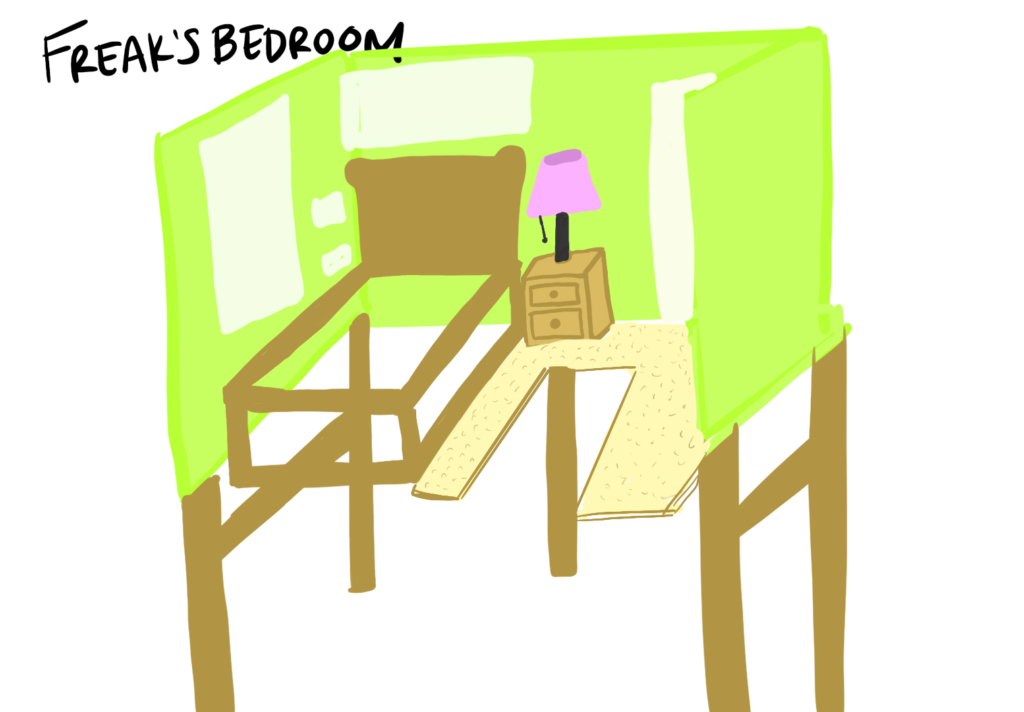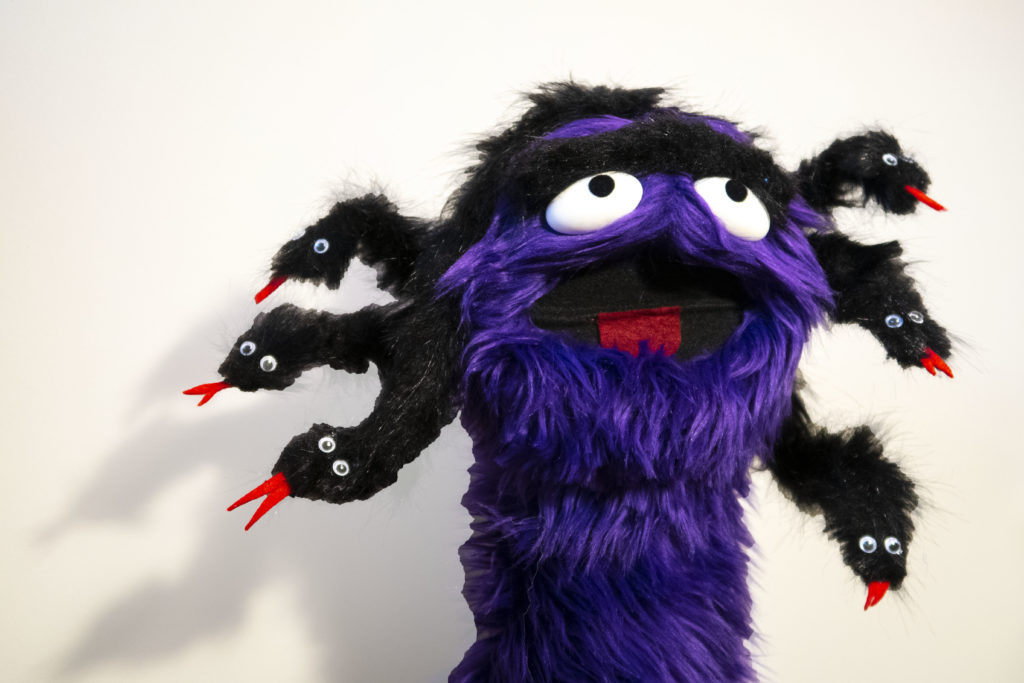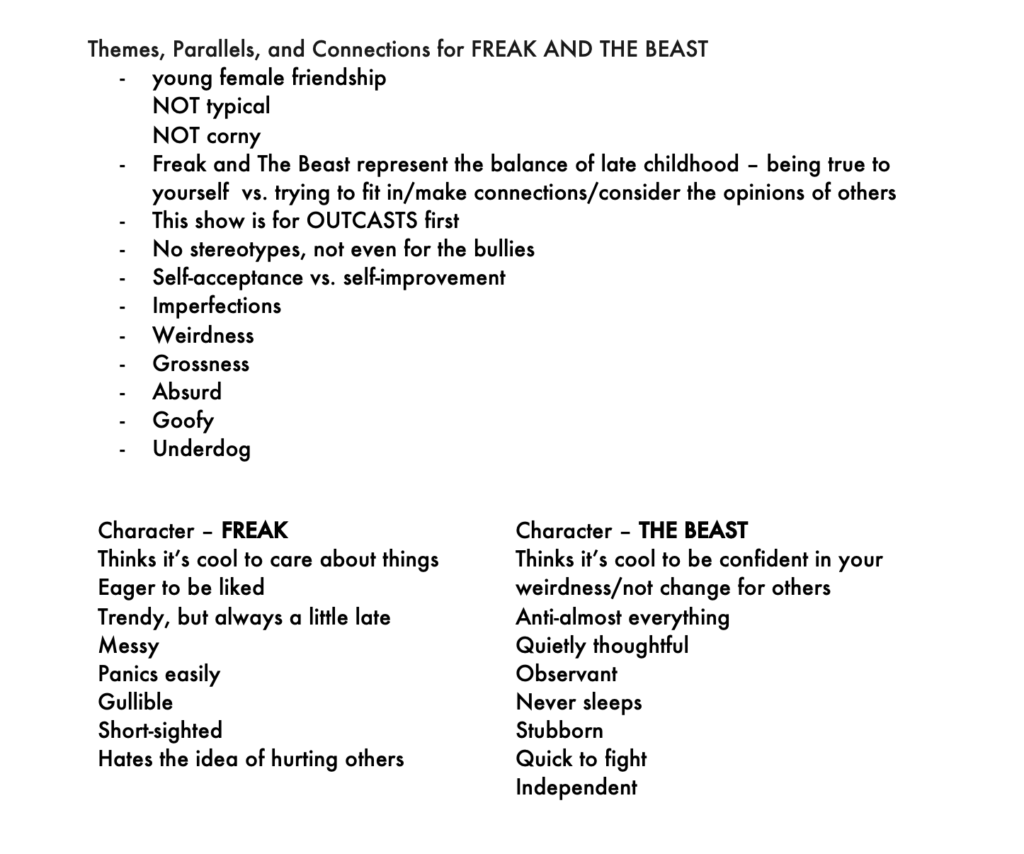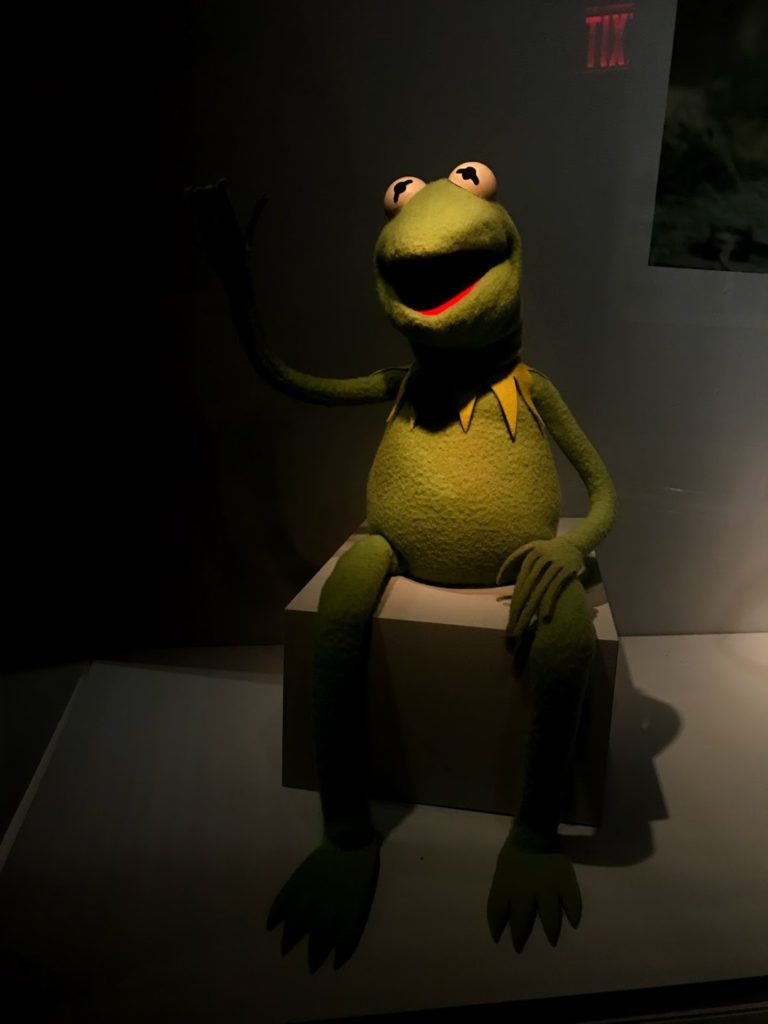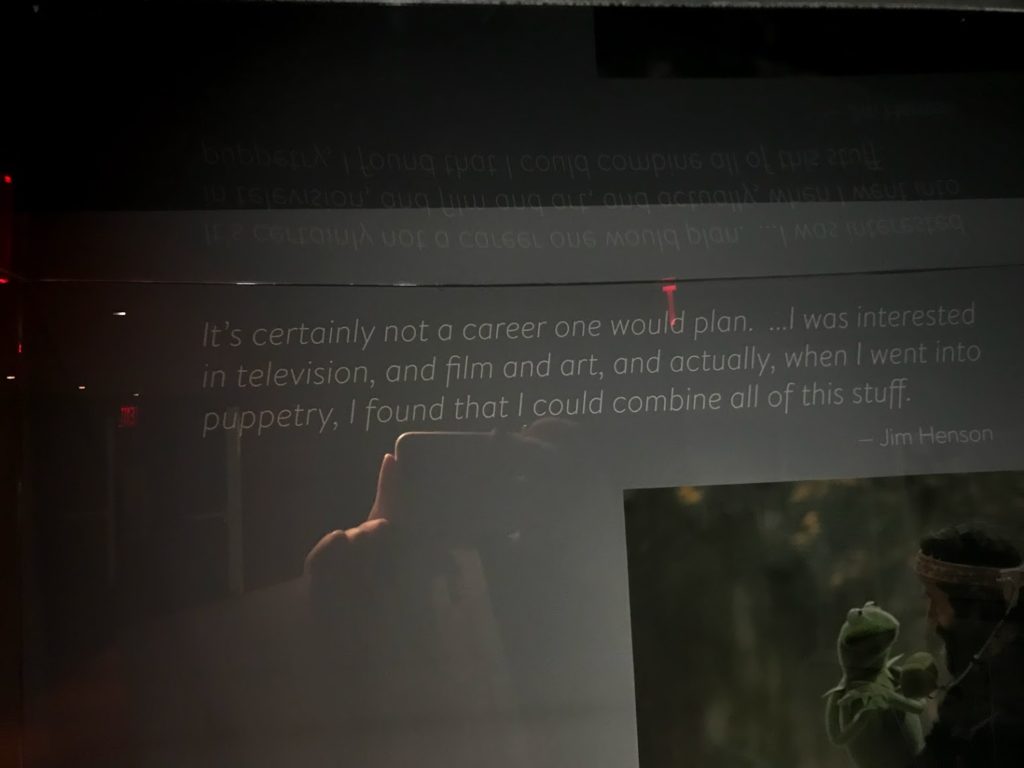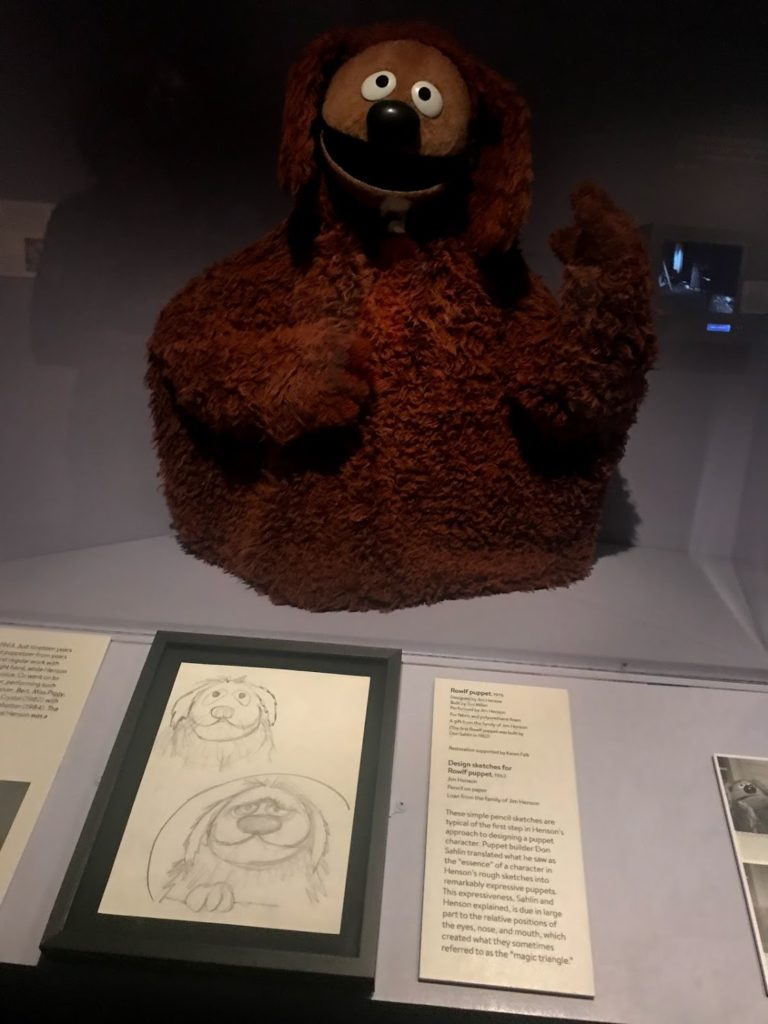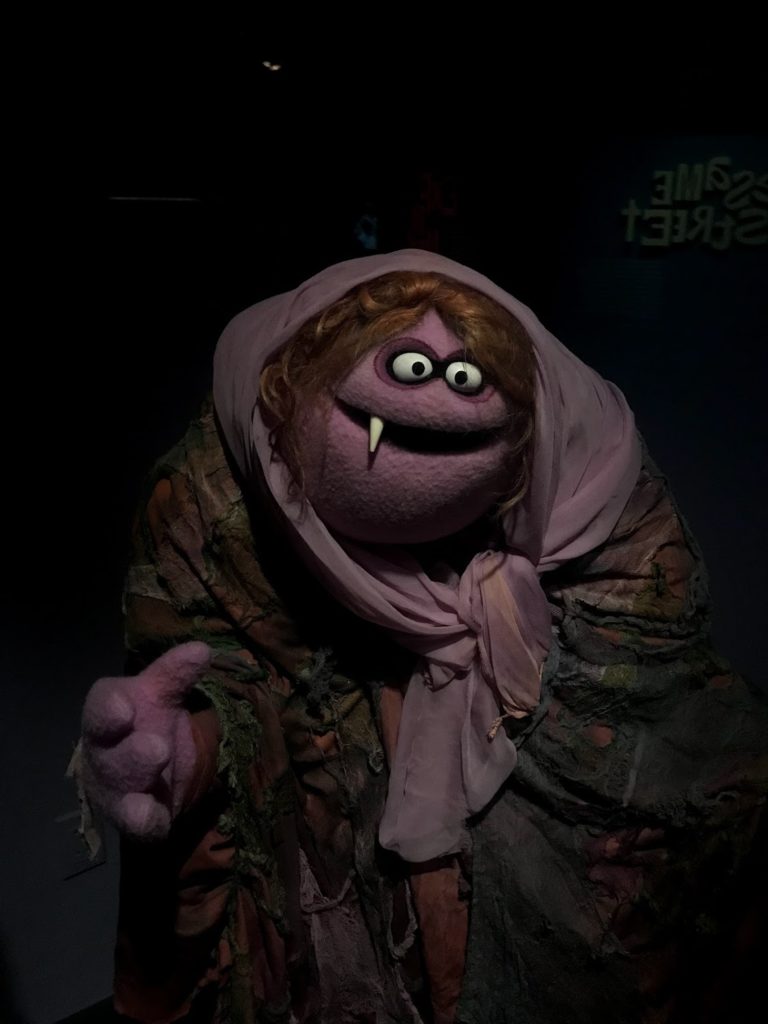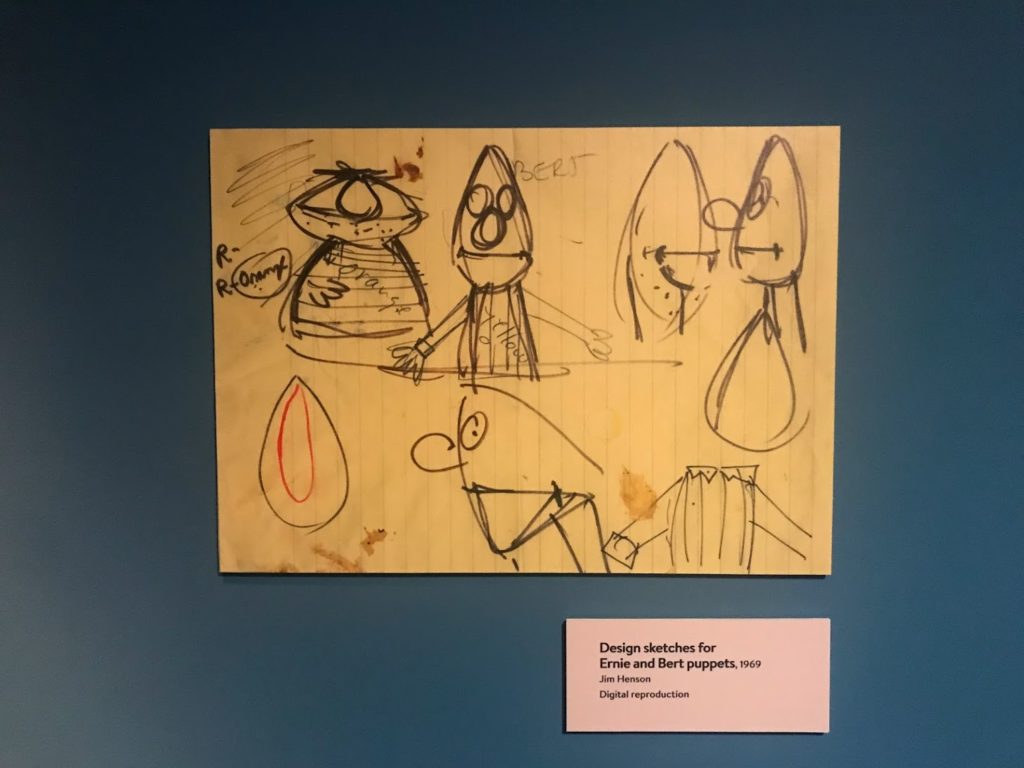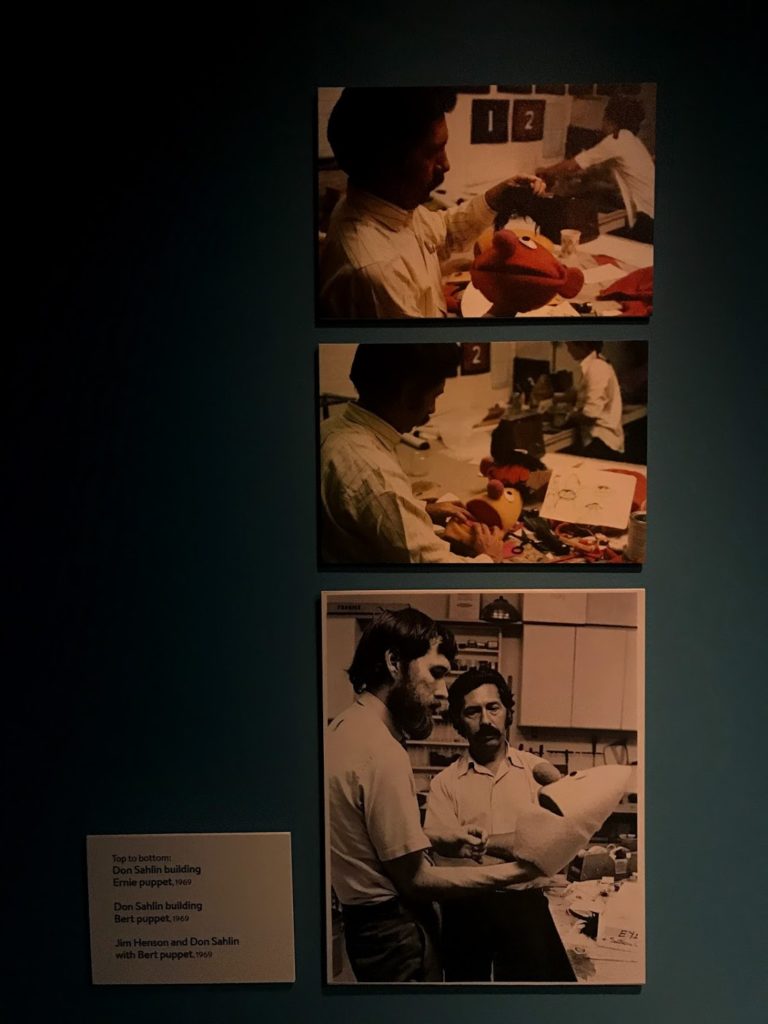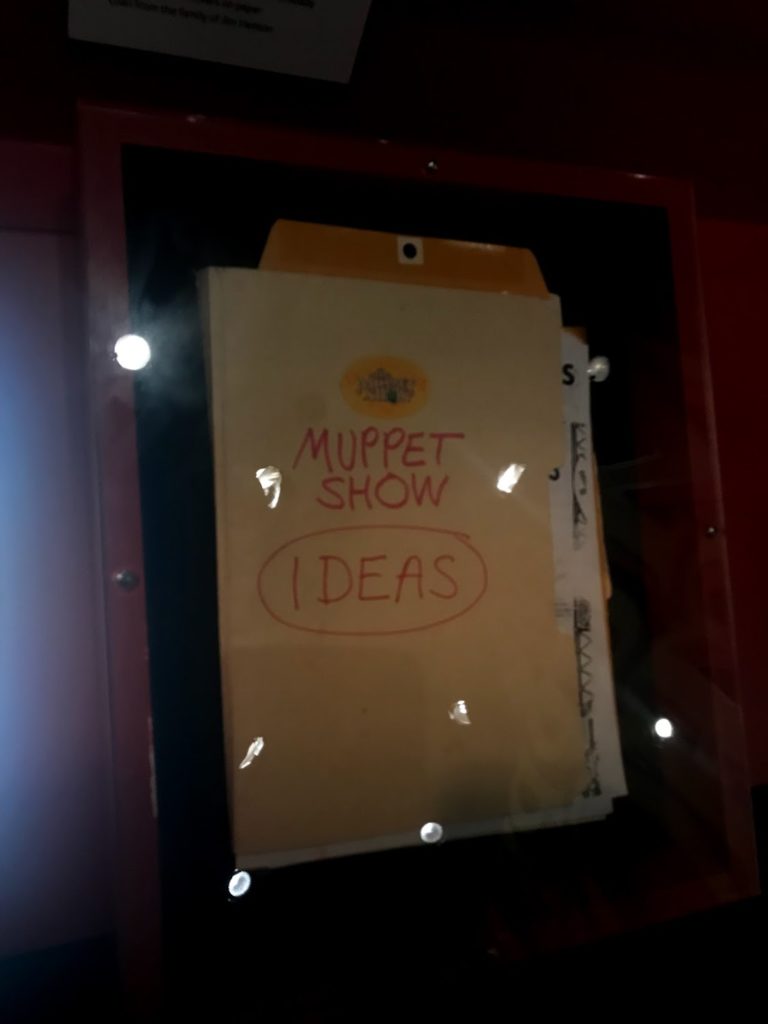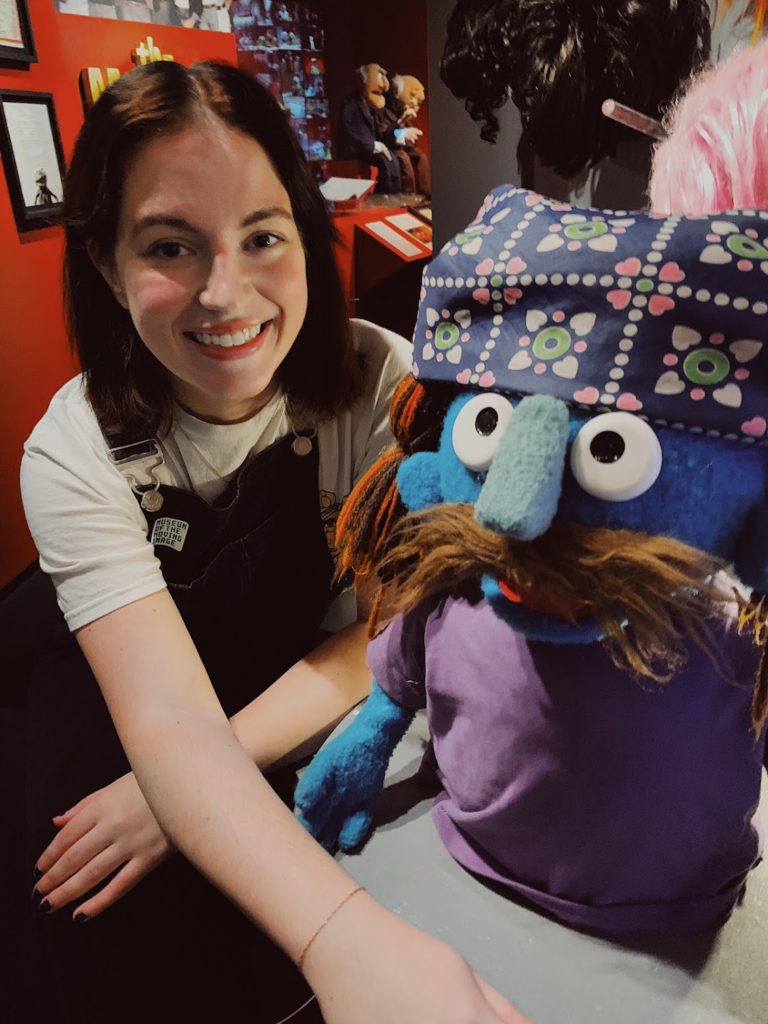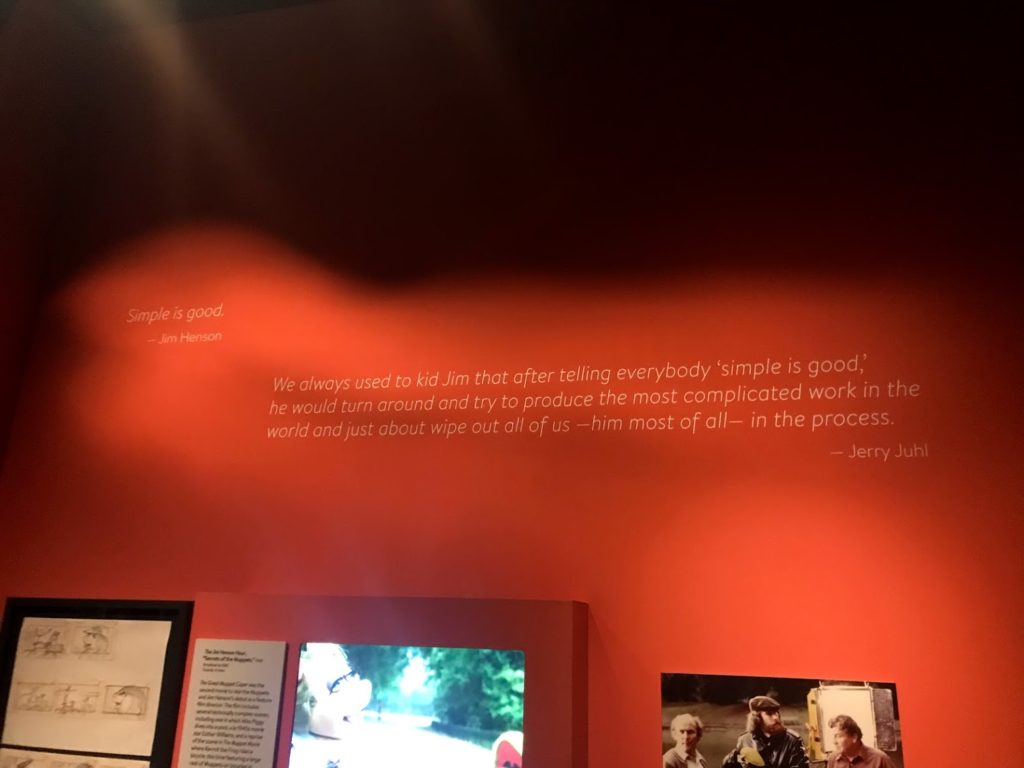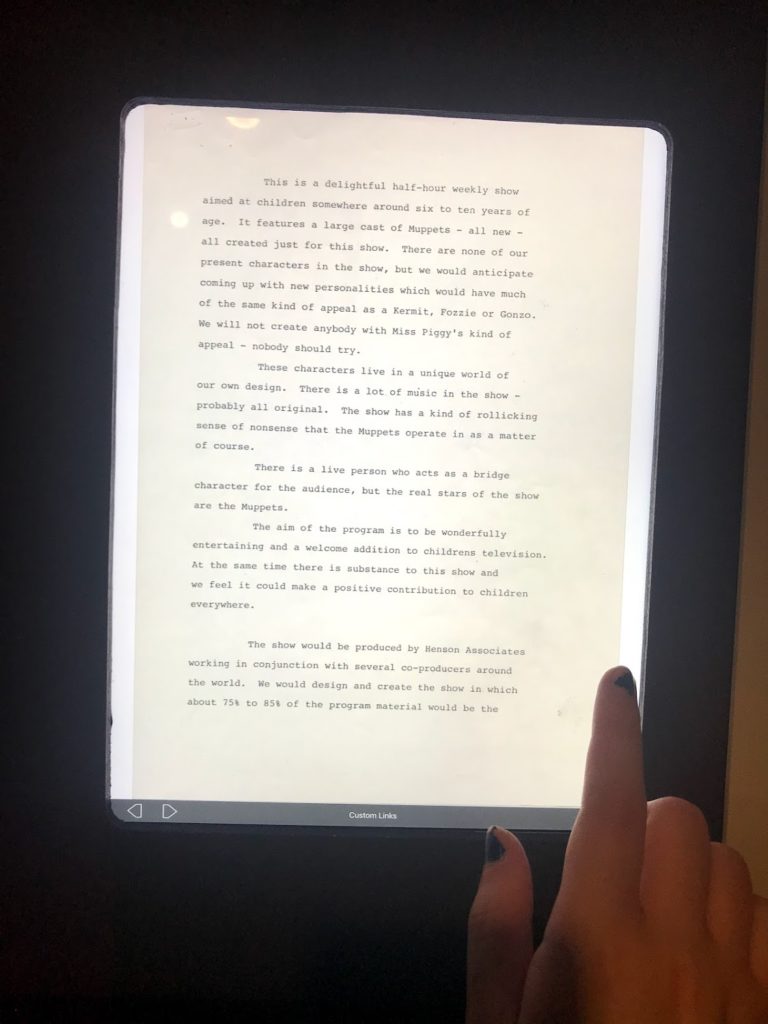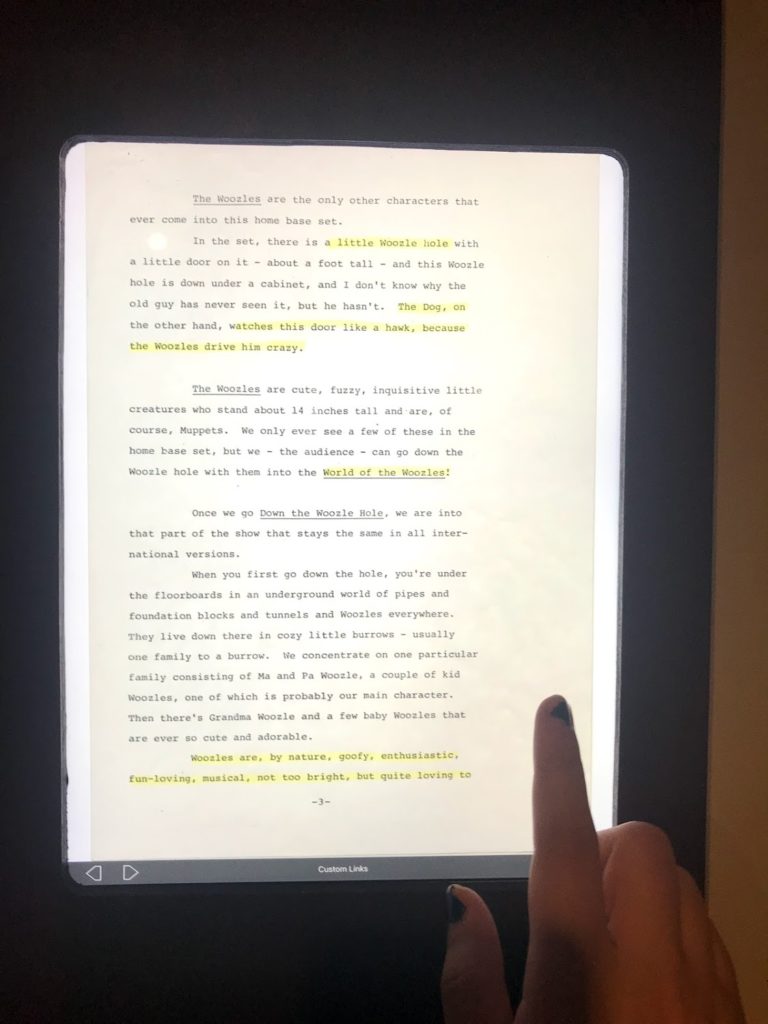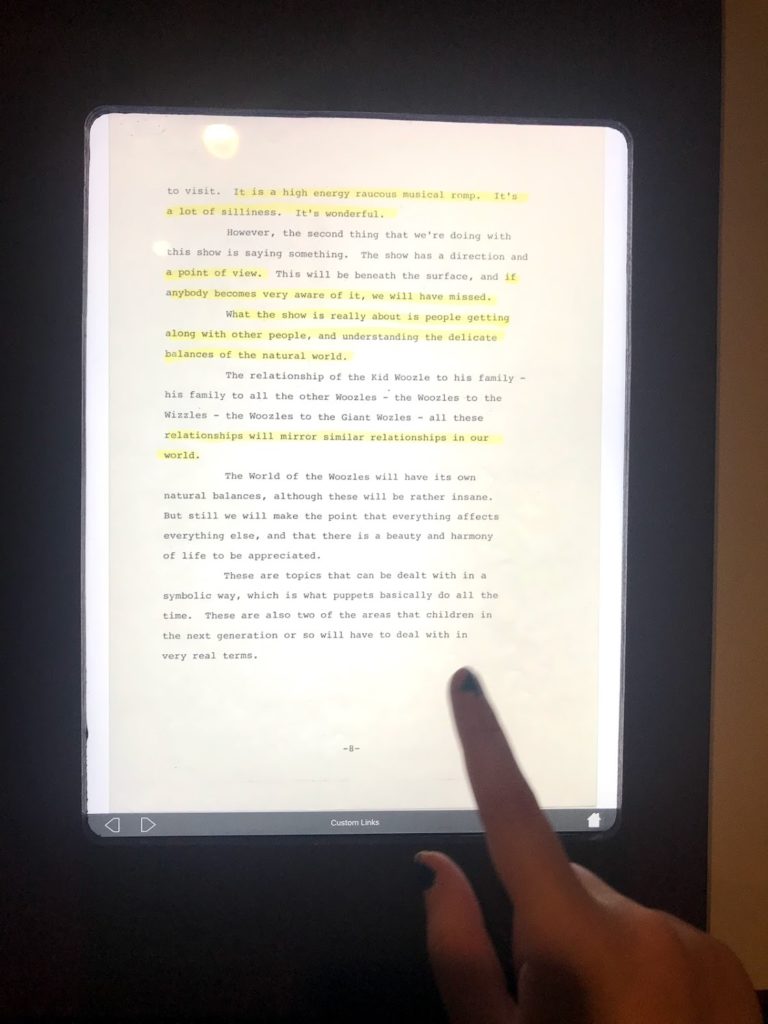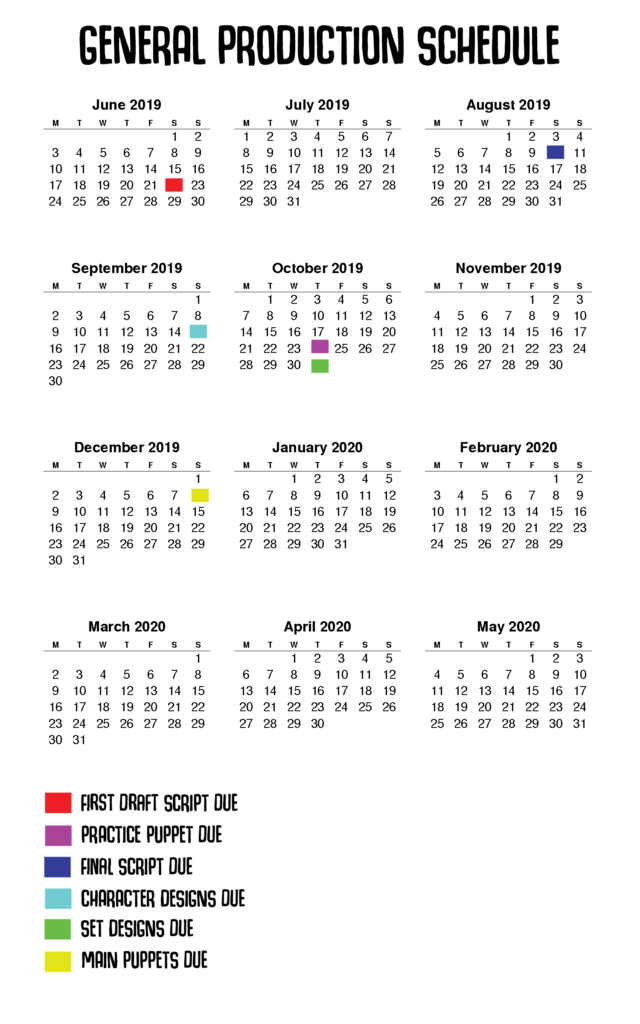For my senior thesis project, I will be producing an 11-minute pilot of an original show “Freak and the Beast.” The pilot will follow two puppet best friends (only known as their bully-given nicknames “Freak” and “The Beast”) on their first day of seventh grade. I also plan on making the actual exhibit at Showcase a major focus of my time next semester. I want a fully immersive, interactive experience with my project sketches, storyboards, a set, and the puppets, and possibly materials for people to make their own mini-puppets or at least a camera set-up for folks to test out performing some of my puppets on-screen.
I was inspired to do this project by the challenge of combining my passions for children’s television, comedy, writing, and set design. I have always looked up to creative icons like Jim Henson and Fred Rogers, and I suddenly realized they were both puppeteers! Since diving into puppets, I have fully realized the potential of this medium to combine all of my relevant skills into something that is passion-driven and also hireable (I hope to work in producing children’s television.)
My project will be different from existing media in the non-traditional themes I will be exploring in Freak and the Beast. First, the protagonists are two girl best friends who do not fall into stereotypes. Female friendships are so often left out of media, even children’s media, and when they are portrayed, are rarely given the nuance of other friendships. Sure, these two girls are fussy and whiny and a little insecure — like all middle schoolers! — but they are also goofy, smart, and a little gross. I am also very passionate about children’s shows that don’t talk down to kids or young teens, and let them indulge in weirdness. I feel like there has been a shift in kid’s TV towards safe, wholesome, moral-at-the-end stories, completely washed of all the weirdness of 90s TV like Grim Adventures of Billy and Mandy, Courage the Cowardly Dog, PowerPuff Girls, and Pinky and the Brain. I’d like to think the two can coexist! I hope to promote healthy themes like being a good friend and sticking up for yourself, along with embracing your weirdness! I never want to feel like I’m preaching to kids, as well as that works with a Pre-K audience. Older kids can read subtlety, and I feel like modern shows underestimate their intelligence as well as their breadth of interests! Kids like weird stuff. If you surround the nugget of wisdom with a weird, goofy, funny show, kind of like a dog’s medicine slathered in peanut butter, you can really hit home with them. And get rid of their heartworms.
Technically, as I’ve discussed in other posts, I’ve been learning how to make Muppet-style puppets all summer. You can find my latest prototype and self-imposed production schedule in my last post.
I’m experienced in woodworking, so I will be using those skills to build sets for the show. They’ll be multipurpose by switching out props/class posters/ surroundings/etc.
Stylistically, I’ve been learning a lot by studying the development of puppets for Sesame Street and The Muppets. I visited the Jim Henson Exhibition at the Museum of the Moving Image and purchased Jim Henson’s journals, so those have been a great source of inspiration as well as the Defunctland YT Series on Jim Henson.
